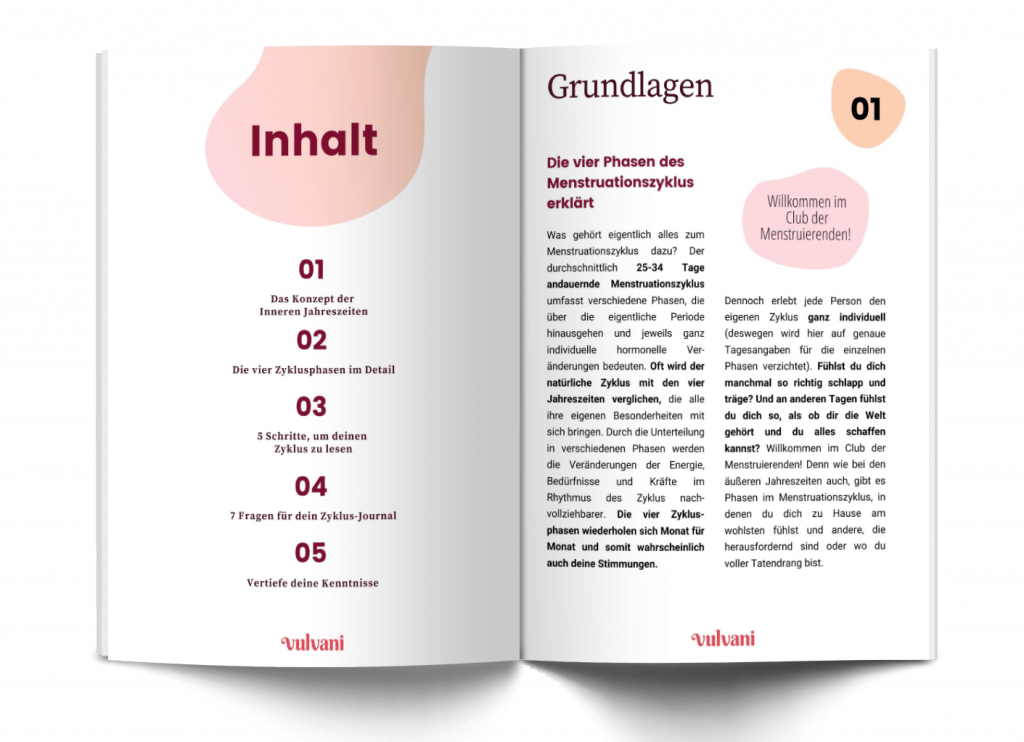
Discovering your menstruation as a spiritual practice
Yasmine understands her menstruation as a spiritual practice and shares in this interview how she is connecting more with her own body through cycle awareness.
Is my period normal? Many menstruating people ask themselves this question. And we have the answers for you! But giving a simple black-and-white answer is not that easy. Because the length, heaviness or regularity of menstruation varies from person to person. So every period is different and is experienced individually. Nevertheless, there are some aspects that typically characterize a healthy period and we will have a look at different menstrual irregularities together. Here you will find the answers to five questions that you have probably asked yourself several times before.
The irregularity of the menstrual rhythm is differentiated between menstruation that occurs too often and menstruation that happens too infrequent. Menstrual cycles that last less than 24 or more than 35 days are called irregular cycles. If menstruation fails to occur for three months or more, this is called secondary amenorrhoea. Periods that are too seldom are called oligomenorrhoea. The menstrual cycle is too long if it is longer than 35 days (maximum 90). Oligomenorrhoea occurs mainly after menarche or before menopause due to changes in the hormonal balance and is normal during this time. Too frequent menstruation, on the other hand, is called polymenorrhoea. This is the case when the total cycle is less than 24 days. Especially if you have not had your menstruation for too long, it is normal that it is rather irregular. But diseases can also be the reason for irregular bleeding. To be on the safe side, you should discuss your fluctuations in your cycle with your gynaecologist.
The monthly bleeding usually lasts between three and seven days. The heaviness of the menstrual flow changes during your menstruation from rather heavier at the beginning to lighter bleeding at the end. Sometimes the period before or after is also accompanied by slight spotting, but this is no longer counted as part of the actual menstruation. The duration of bleeding is influenced by various factors, such as hormones, stress or age.
Weak bleeding that occurs between two periods is called spotting or intermittent bleeding. They are a form of cycle disorder. Regardless of the actual menstruation, spotting can start at any time and is normal. It is often an unexpected brownish discharge that can last one to three days. The cause is usually a hormonal change. If the bleeding occurs at the time of ovulation, it is also referred to as ovulatory bleeding. Light bleeding shortly before or right after the actual menstruation is called spotting.
The irregularity of the bleeding rhythm is differentiated between a too strong and too light menstruation. Excessive menstruation is called hypermenorrhoea. It is characterised by increased blood loss during menstruation. This is the case when the blood loss per menstruation is more than 80ml. Menstruation that is too light, on the other hand, is called hypomenorrhoea. It is characterised by a weak and short menstrual bleeding. This is the case when the blood loss per menstruation is less than 25ml. Do you change your tampon or sanitary towel less frequently than every two hours? Then everything is probably normal. If you use a menstrual cup, you can check the amount of menstrual blood quite easily. This is because menstrual cups usually have a capacity of up to 30ml and small ml-lines on the side.
Mild discomfort or pain that occurs before, during or after menstruation is normal for many menstruating people. These include cramps, nausea, headaches, a feeling of tension in the breasts or general discomfort. If the symptoms are more severe and you are therefore limited in your everyday life, they can be a form of cycle disorder. Painful or difficult periods are called dysmenorrhoea. Complaints and mood swings a few days before menstruation begins are known as premenstrual syndrome (PMS). Pain that can occur at the time of ovulation and is usually localised on one side of the lower abdomen is called middle pain. Endometriosis is a chronic, very painful and difficult to treat disease of people with a uterus. Outside the uterine, uncontrolled growths of the uterine lining form. The causes for the development of the disease are still unknown and often it takes years until a diagnosis is made. This is to be changed through a petition in Germany.
If you track your menstrual cycle and write down different dates, you will have a better overview and notice changes in your cycle or period immediately. Are you asking yourself when you should discuss your menstrual problems with your gynaecologist? Ideally during your regular check-ups. And if your period is particularly heavy, long or irregular and you feel insecure, don’t make a quick google search. Better make an additional gynaecologist appointment and get a proper check-up and some quality advice.
Are you curious to try free bleeding and experience your period in a new way? Then our online course “Menstruation without products: Learn Free Bleeding” is perfect for you




Yasmine understands her menstruation as a spiritual practice and shares in this interview how she is connecting more with her own body through cycle awareness.

What options are there for male birth control? Ailsa delivers an overview of what is available now, and what may come in the future.

Sustainable underwear? The founders of TUKEA talk about fair labour conditions, body diversity and body literacy.
…and empower countless women to make empowered choices about their bodies!

